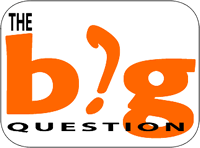 How well does Gagne’s Nine Events of Learning fit in e-learning? I think it is a good fit, but in full disclosure, I do not always use all events or in the intended order. If you are not familiar with Gagne, here is a quick overview.
How well does Gagne’s Nine Events of Learning fit in e-learning? I think it is a good fit, but in full disclosure, I do not always use all events or in the intended order. If you are not familiar with Gagne, here is a quick overview.The following are examples of how I believe we can incorporate each event, although I have taken some interpretive liberties with each event. Then again, the events were not originally designed with e-learning in mind so some liberal interpretations must be made.
- Gain attention – This works great in e-learning. Use of animation, audio, graphics, etc. make this any easy task. The important thing is to tie it to the content and to “stimulate learning” of the subject at hand. Do not just get the learners’ attention, but get them curious and motivated to learn about the subject/skill your course addresses.
- Inform learners of the objectives/direction – I always include objectives. Learners should, and want to, know what they are going to learn, but do not include objectives as written in your course design plan; they're very dry and boring that way. State them as if you were face to face with the learners. If your course has characters, let them tell the learners what they will learn and what to expect.
- Stimulate recall of prior learning – Have an exercise(s) that will assist learners associate the subject with concepts they are already familiar with or link the exercise to prior experience or knowledge. You need to really know your audience to pull this off, which requires a thorough needs assessment. In the classroom you can also use this event to measure your audience and tailor the training to them, if needed. In an asynchronous e-learning environment you will not be able to do this in a direct manner, but you can allow for self reflection and user control of the course. The user should be able to pick and choose the content they need. Even if you are making a very linear course, you should at least have a very accessible contents menu.
- Present the content- This does not mean shifting into page turner mode. Keep it interactive. This can include using a character and story to deliver the content, breaking it up with questions and input from the learner, games, branching scenarios/sims, etc. I also like to use interactive Flash animation to put emphasis on the content and to allow practice and application of the new skill or knowledge. FYI: Typically the following feedback levels (5-7) will be incorporated into the “present the content” event.
- Provide learning guidance - This is an opportunity for the learner to apply the learned knowledge or skill, but with guidance. A good example is a simulation. Whether a software sim or a soft skill branching sim, it should have sound instruction/directions and feedback for incorrect choices or answers. Unlike classroom training you cannot directly gauge the challenges the learner is having and any feedback provided is pre-scripted. The only alternative is a way for the learner to post questions or need for clarification through the course, such as an e-mail function. This will still not provide immediate guidance, but is an alternative if the course's feedback is not enough. Another reason that course evaluation and redesign is important.
- Elicit performance - Allow the learners to practice the new skill. An interactive exercise or a simulation. Remember, this event does not require as much guidance as the prior event. They should be at the point where they can apply the skills and wish to practice those skills. For example, a software sim in a “try me” mode, but with little are no instruction. Feedback can be provided, but more likely at the end of the event. This is an opportunity for the learners to confirm their understanding of the content and a chance to practice and increase the likelihood of retaining information.
- Provide Feedback - For e-learning courses, feedback is folded into the 2 prior events/feedback levels.
- Assess performance – With very few exceptions, I include an assessment at the end of the course (switching events events 8 and 9). I will include feedback for both correct and incorrect answers. For correct answers I may provide some additional pertinent information, which may boost retention. And for incorrect answers I will provide feedback that provides information on why their answer is incorrect and, if appropriate, what the correct answer is and why. If the content involves software I may also include a screenshot if it helps. Although this is the eigth event I always make it the last event, after Enhance Retention and Transfer. My experience is that once the learner has completed the assessment and received their certificate and credit for the course, they most likely exit. So, I swap the ninth and eigth events.
- Enhance retention and transfer (closure)- Prior to the assessment I will provide a conclusion. I highlight and review important elements of the content and re-affirm if the course objectives were met. I will also discuss how this new knowledge or skill will be used in the workplace. This is also an opportunity to provide review questions prior to launching an assessment (event 8).
This is how I apply Gagne's Nine Events of Learning. Please feel free to add your comments on how you apply the nine events in e-learning courses. Thank you.





 My predictions for 2009:
My predictions for 2009: The MinuteBio blog is now featured in the eLearning Learning community, which aggregates e-learning blogs. As described at eLearningLearning.com, "eLearning Learning is a community that tries to collect and organize the best information on the web that will help you learn and stay current on eLearning."
The MinuteBio blog is now featured in the eLearning Learning community, which aggregates e-learning blogs. As described at eLearningLearning.com, "eLearning Learning is a community that tries to collect and organize the best information on the web that will help you learn and stay current on eLearning."